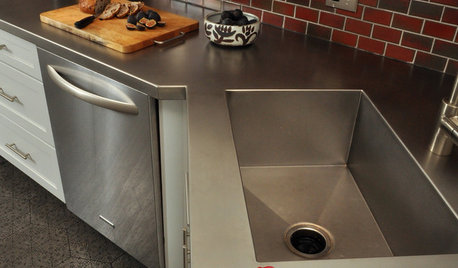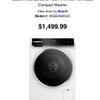question on detergent choice
stbonner
13 years ago
Related Stories

FEEL-GOOD HOMEThe Question That Can Make You Love Your Home More
Change your relationship with your house for the better by focusing on the answer to something designers often ask
Full Story
GREEN BUILDINGConsidering Concrete Floors? 3 Green-Minded Questions to Ask
Learn what’s in your concrete and about sustainability to make a healthy choice for your home and the earth
Full Story
KITCHEN DESIGNKitchen Counters: Stainless Steel, the Chefs' Choice
Professional-grade strength and shining beauty unite in classic stainless steel countertops for the kitchen
Full Story
SELLING YOUR HOUSE15 Questions to Ask When Interviewing a Real Estate Agent
Here’s what you should find out before selecting an agent to sell your home
Full Story
COFFEE WITH AN ARCHITECTA Quiz for Architects in Question
Should you trade in your T-square for a barista tray? Answer a few simple questions to find out
Full Story
WORKING WITH PROS12 Questions Your Interior Designer Should Ask You
The best decorators aren’t dictators — and they’re not mind readers either. To understand your tastes, they need this essential info
Full Story
REMODELING GUIDESConsidering a Fixer-Upper? 15 Questions to Ask First
Learn about the hidden costs and treasures of older homes to avoid budget surprises and accidentally tossing valuable features
Full Story
REMODELING GUIDESPlanning a Kitchen Remodel? Start With These 5 Questions
Before you consider aesthetics, make sure your new kitchen will work for your cooking and entertaining style
Full Story
MOST POPULAR8 Questions to Ask Yourself Before Meeting With Your Designer
Thinking in advance about how you use your space will get your first design consultation off to its best start
Full Story
DOORS5 Questions to Ask Before Installing a Barn Door
Find out whether that barn door you love is the right solution for your space
Full Story




larsi_gw
steveomc
Related Professionals
El Sobrante Kitchen & Bathroom Designers · Flint Kitchen & Bathroom Designers · Newington Kitchen & Bathroom Designers · Queen Creek Kitchen & Bathroom Designers · Adelphi Kitchen & Bathroom Remodelers · Bloomingdale Kitchen & Bathroom Remodelers · Daly City Cabinets & Cabinetry · Kaneohe Custom Closet Designers · Weehawken Custom Closet Designers · Bradenton Flooring Contractors · Brockton Flooring Contractors · Fort Walton Beach Flooring Contractors · Fox Chapel Flooring Contractors · Limerick Flooring Contractors · Sachse Flooring Contractorssshrivastava
sshrivastava
suburbanmd
sshrivastava
vintage36
sshrivastava
suburbanmd
sshrivastava
stbonnerOriginal Author
sshrivastava
stbonnerOriginal Author
livebetter
dadoes
stbonnerOriginal Author